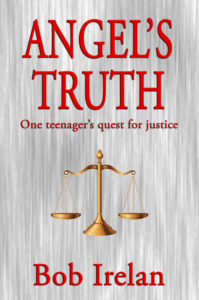

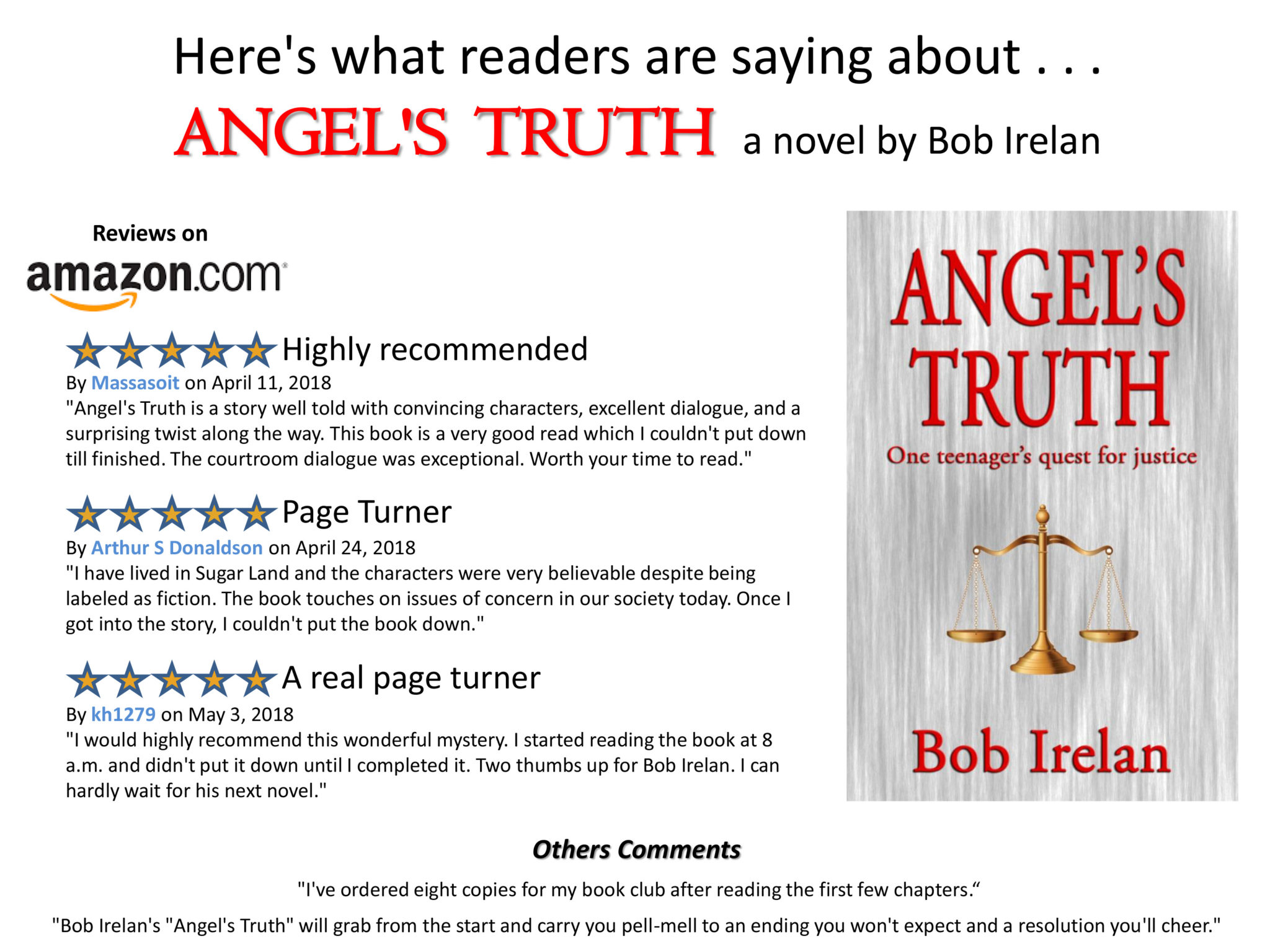
The murder mystery starts when Angel Gonzales is charged with heinous crimes that law enforcement, the media, and most folks in Richmond, Texas, and surrounding communities are certain he committed.
The crimes and trial dwarf anything that has happened in that part of the Lone Star state in anyone’s memory.
When, against all odds, the jury renders “not guilty” verdicts, shock escalates to anger.
In the minds of many, justice has failed, and a brutal criminal is being set free. For Angel and his court-appointed public defender, Marty Booker, being judged “not guilty” isn’t enough.
Together and with help from an unanticipated source, they attempt to prove Angel’s innocence.
In the process, they butt up against prejudice, deceit, and a sheriff and district attorney who put politics, ambition, expedience, and arrogance above responsibility to do their jobs.
It’s a story of horror, hatred, belief, and persistence – a story of a Mexican-American teenager who nearly loses his life on the way to becoming a man.
Outer Banks Publishing Group author Bob Irelan hopes his novel, Angel’s Truth will help people realize that justice is not always applied fairly, especially when it to comes to racial minorities
Angel’s Truth Amazon Reviews pdf
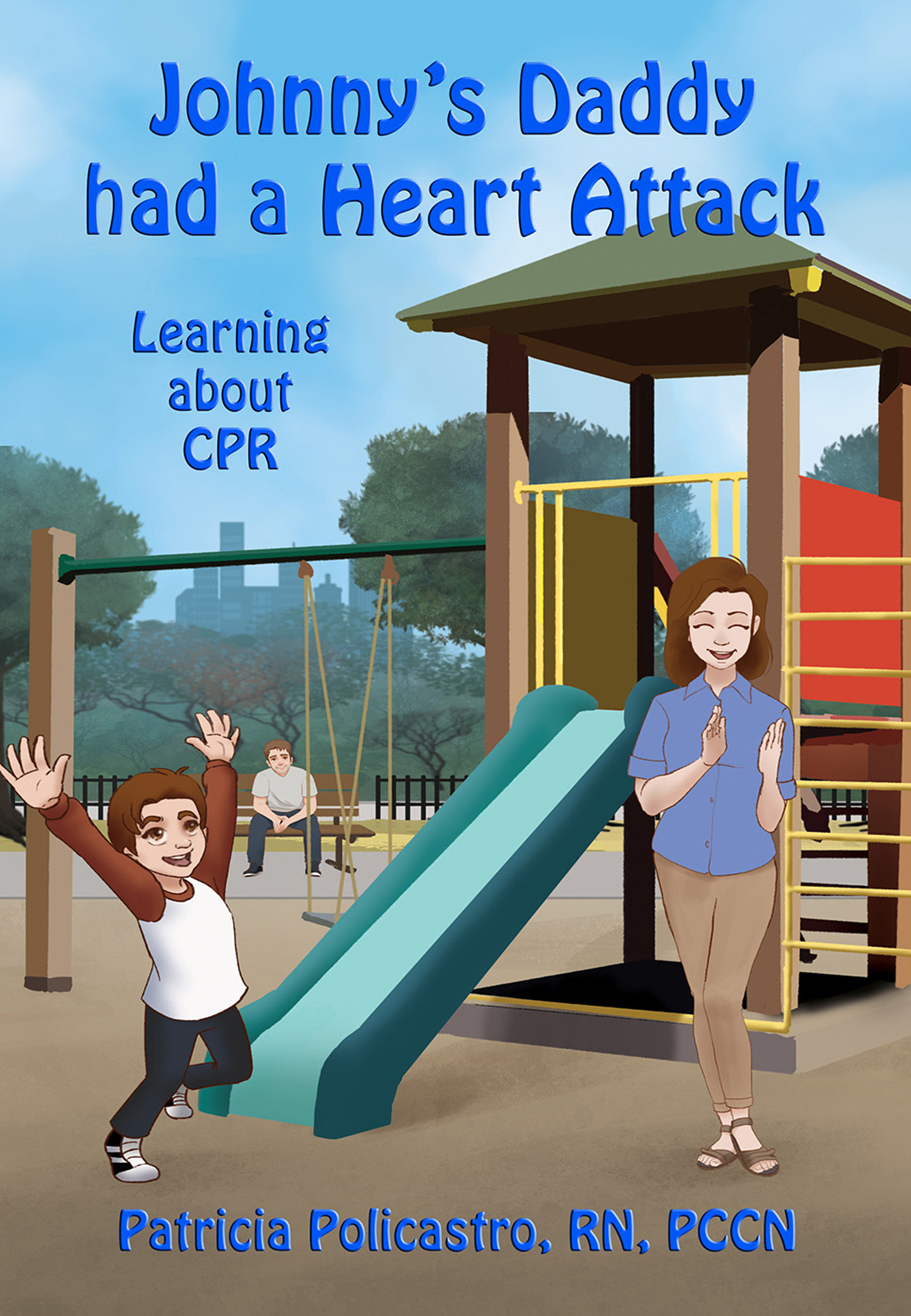
We are excited to publish Patricia Policastro’s first children’s book, Johnny’s Daddy had a Heart Attack, which illustrates how EMTs administer CPR and save people in critical health situations.
In this interview Ms. Policastro, a critical care RN, tells us how she hopes her book will help children understand and cope with an emergency in their family or anywhere.
And the best part is 10% of the profits from the book sales will go to the American Heart Association.
I was inspired to write this story by a friend’s husband who had a heart attack when their son was a young age. He did not receive CPR, as he didn’t lose consciousness, but he had chest pain and suddenly did not feel well. He ended up at the hospital with stent placement. Just thinking about their situation inspired me to try to help children in some way. As a nurse, we are always teaching and what better than to teach about a life saving intervention.
Why would this story help children? What is the purpose of the story?
If a child witnesses a similar event, hopefully they will recall what they have learned from the story and have more of an understanding of what is happening during the event, rather than not knowing and feeling scared. The target audience is children ages 4 through 12. My hope and the purpose is to reduce their fear and anxiety during an emergency.
What does the story accomplish? What do you hope to accomplish?
I hope to start children learning about health and life-saving measures at an early age. This story will introduce children to an emergency which necessitates calling “911” and how CPR intervention and an AED (Automated External Defibrillator) helps the human body.
I hope to advocate for people with heart disease by teaching children more knowledge about it and possibly, in their future, when they are older, they might want to become CPR-certified and possibly save someone someday!
How did you research information for the story? Did you have experience in health care or working with children? Have you had to perform CPR?
I am a registered nurse who had experience working on a step down unit for open heart surgical patients, as well as experience working on a Medical-Surgical unit, a Telemetry unit, with some Critical Care experience. It is required to be BLS certified (Basic Life Support) which is inclusive of CPR training. Unfortunately, I have had to apply CPR to some of my patients, and it is a stressful and emotional situation.
The only experience I had working with children, quite frankly, was at a daycare center while I was attending nursing school, but not in a nursing capacity. However, I still felt I could relate to how they would feel and react during an emergency and wanted to try to help in some way.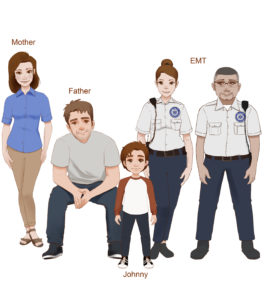
How long did it take you to write the story?
I have been working on this project over several years, believe it or not. I would work on it, then put it aside, of course, because life gets in the way at times. One of the main barriers to finishing the book was finding an illustrator within my budget. Once I was referred to an illustrator, the completion of this story really began to come together.
Did anyone help you or advise you?
Yes, of course! I feel you should always seek advice or help when you need to. That is also part of being a nurse. I approached a former coworker who now owns his own company, where he trains for BLS certification. He willingly offered his employees’ time to help by modeling the CPR positions so I could photograph them, and I then sent the photos onto the illustrator. The illustrator, I feel, was creative in capturing the fine details of my scene descriptions. I also pursued an opinion from one of the interventional cardiologists I work with, who suggested that there were still some technical terms which needed to be simplified for better understanding. But much direction and advice I attribute to my publisher, Outer Banks Publishing Group. After recommending an illustrator, my publisher really gave me the incentive to continue with and complete my project.
Have you written any other stories?
This is my first story. I was inspired by a friend’s health situation. I remember I began to write the story line when I was on the beach during vacation. It actually didn’t take me long to write it, but every time I had reviewed it, I felt the need to edit it. This occurred many, many times. I didn’t realize how difficult it is to get it just right with words children would be able to comprehend and a story line they could understand. You sort of have to put yourself in their mindset.
Will you write another story for children?
Yes, I would like to. I actually have several other story lines in mind, similar to this one whereby teaching children about other health emergencies a family member could experience or other health conditions people might have, but I would first like to see how this story, Johnny’s Daddy Had a Heart Attack, is perceived and accepted.
___________________________________________
Johnny’s Daddy had a Heart Attack
By Patricia Policastro
List Price: $10.99
7″ x 10″ (17.78 x 25.4 cm)
Full Color Bleed on White paper
36 pages
Outer Banks Publishing Group
ISBN-13: 978-1732045200
ISBN-10: 1732045208
BISAC: Fiction / Family Life
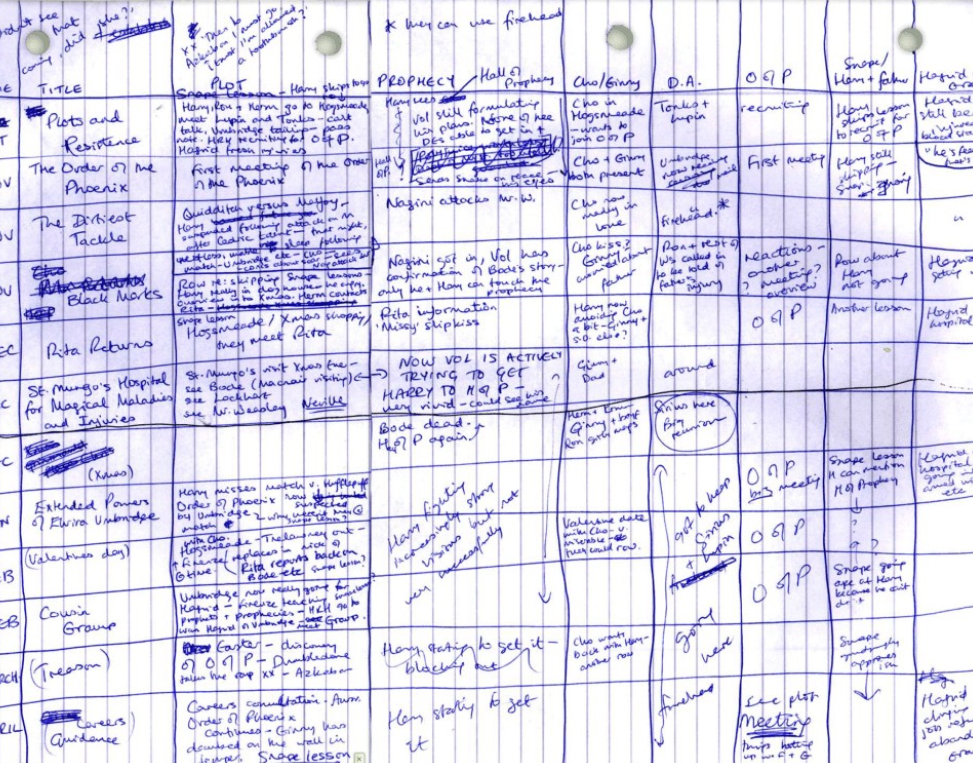
Republished in part from Medium.com
Welcome to Wonky & Technical, a multipart multimedia project that explores the surprisingly technical side of creativity. In the first episode, I sit down with Dyrk Ashton to talk about fiction, spreadsheets, and the work that goes into making things feel right. In the first article (below), I take a deep dive into creative spreadsheets and how data organization can be a critical part of the creative process.
Writing is a strange beast.
Everyone writes. We text, we send postcards, and we write quarterly reports. We send an average of 205 billion emails per day, and we send those emails quickly and nigh constantly. Our world runs on writing things down.
At the same time, though, we’re spectacularly bad at it. Students struggle with basic essays, professionals can barely write a scope statement, HR departments terrorize entire buildings with feel-goody gibberish.
And fiction? Oh, fiction is a mess.
Pick up your favorite book. Grab some paper. Look for inconsistencies. Almost every popular series has at least one plot hole. The same goes for the classics. It’s ugly.
The Hobbits didn’t give the ring to the Great Eagles, Harry Potter never abused time-turners, and for whatever reason the Bugger queens never moved off the home world. Indie books are lucky to hit the market without typos on the first page.
These huge errors aren’t common due to laziness, though; logistical error rates are high because humans are error-prone machines. As projects grow, error rates increase, and books are pretty damn big. Check the numbers.
The average book is 90,000 words long. If you’re a genre fiction junkie like me, the average word counts are even higher. Malazan and Wheel of Time both clock in around 3 million words. GOT sits, unfinished, at a cool 1.77 million. The web series Worm is an unbelievable 1.68 million words long, and Sanderson keeps throwing an integer overflow error.
In terms of man-hours, a single book can represent hundreds of hours. An entire series? Thousands. Even the most organized people around make big mistakes when they have that much rope to hang themselves with.
So why the hell is everyone so obsessed with creativity?
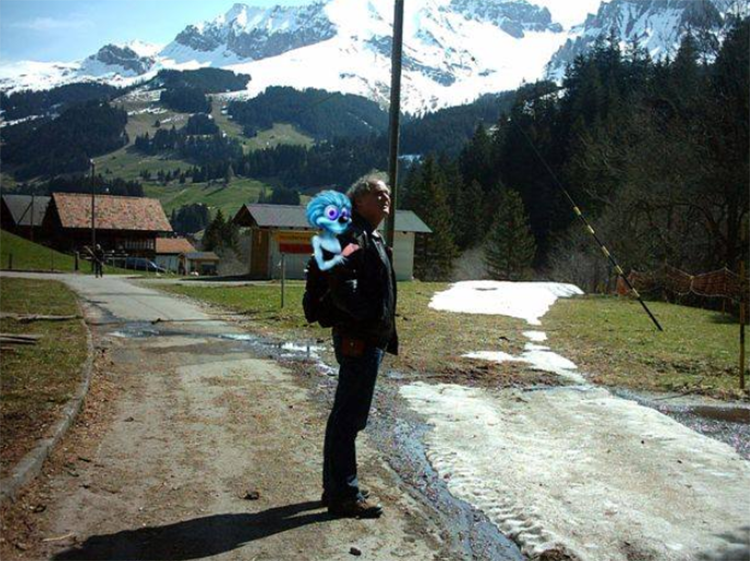
Outer Banks Publishing Group (OBXPG) recently signed Dutch author Koos Verkaik’s Alex and the Wolpertinger children’s series. The first book in the seven-book plus series, The Monster Inn, will be published in May/June.
Koos is the author of over 60 books from children’s series to scfi. He is also the author of the Saladin the Wonder Horse children’s series also published by OBXPG. Koos announced the news to Alex and characters in the series. Their conversation follows.
“Hey, Alex… have you heard the big news?”
“Oh yes, Ludo the wolpertinger! Our stories are published in the USA now by Outer Banks Publishing Group!”
“All these crazy adventures we’ve gone through! In Cloverland, the land of giants… and in the mysterious Downhills, where you come from, wolpertinger…”
“Yeah, the Downhills… That’s where I live – that’s where the dragons and the monsters are!”
“In Cloverland I came upon Ruff Rumble, the giant prince. Remember, Ludo?”
“He took you to his castle, Robber’s Nest and set you to work in the kitchen…”
Yes! That is where it all started! A magician came to Robber’s Nest. His name is Halo. When Ruff Rumble hears that Halo is able to make gold, he holds the magician prisoner…
Magician Halo asks Alex to help him. Alex must go to a wizard in the mysterious Downhills, where monsters, dragons and wolpertingers live…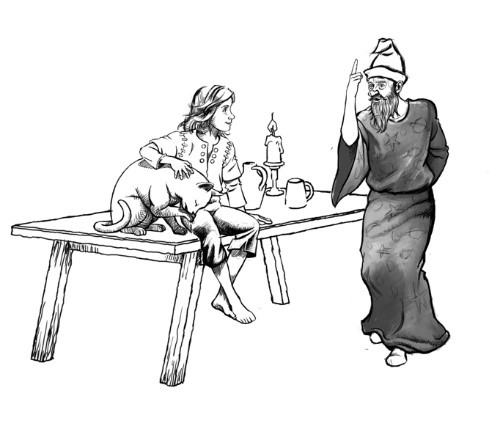
Alex and Princess Barbara enter the Downhills and make friends with Ludo the wolpertinger
First they go to the Monster Inn, where all the odd travelers of the Downhills meet…
Oh, all those strange creatures: monsters, dragons, wolpertingers… giants…
Uncle Balloon, the flying mammoth, Fabulus the magician…
Huge lizards, lobsters, toads, beetles, turtles…
The Magic Oak – the only entrance to the mysterious Downhills…
Welcome to the Monster Inn – come in and meet all the characters from the exciting series of children’s books Alex and the Wolpertinger!
But remember…never trust a wolpertinger! For wolpertingers only give you trouble! A long time ago, there was a boy who made friends with a wolpertinger. That was Alex, the boy from the Alps, who lived in the land of the giant King Clover and traveled through the Downhills – together with Ludo the wolpertinger. They had many wondrous adventures, and this is how they met.
Outer Banks Publishing Group will publish the following titles:
The Monster Inn
The Downhills
Uncle Balloon
The Land of Fringe
The Dragon Garden
Rusty Iron
Three Mad Princes
(and… more titles to come!
You can read more about Koos Verkaik and his books here.
 |
| Stephen Hawking Elon Musk Bill Gates |
 |
| Terminator |

Here is an excellent video by Michael D. Butler on how to get more reviews for your book on Amazon. You can find more information on his blog, Beyond Publishing.
Only 65% of the world’s books are purchased through Amazon according to Forbes but that is still a big enough number to smartly utilize their platform.
In this video Michael D. Butler, Best-Selling Author, Publisher and Book Launch Expert shows new and veteran authors HOW to get MORE verified reviews on Amazon without getting slapped and shows what is the tipping point to get Amazon to push your book out to the wold.
On this video we talk about:
Getting Reviews on Amazon is not easy but it is very important if you want Amazon to push you out.
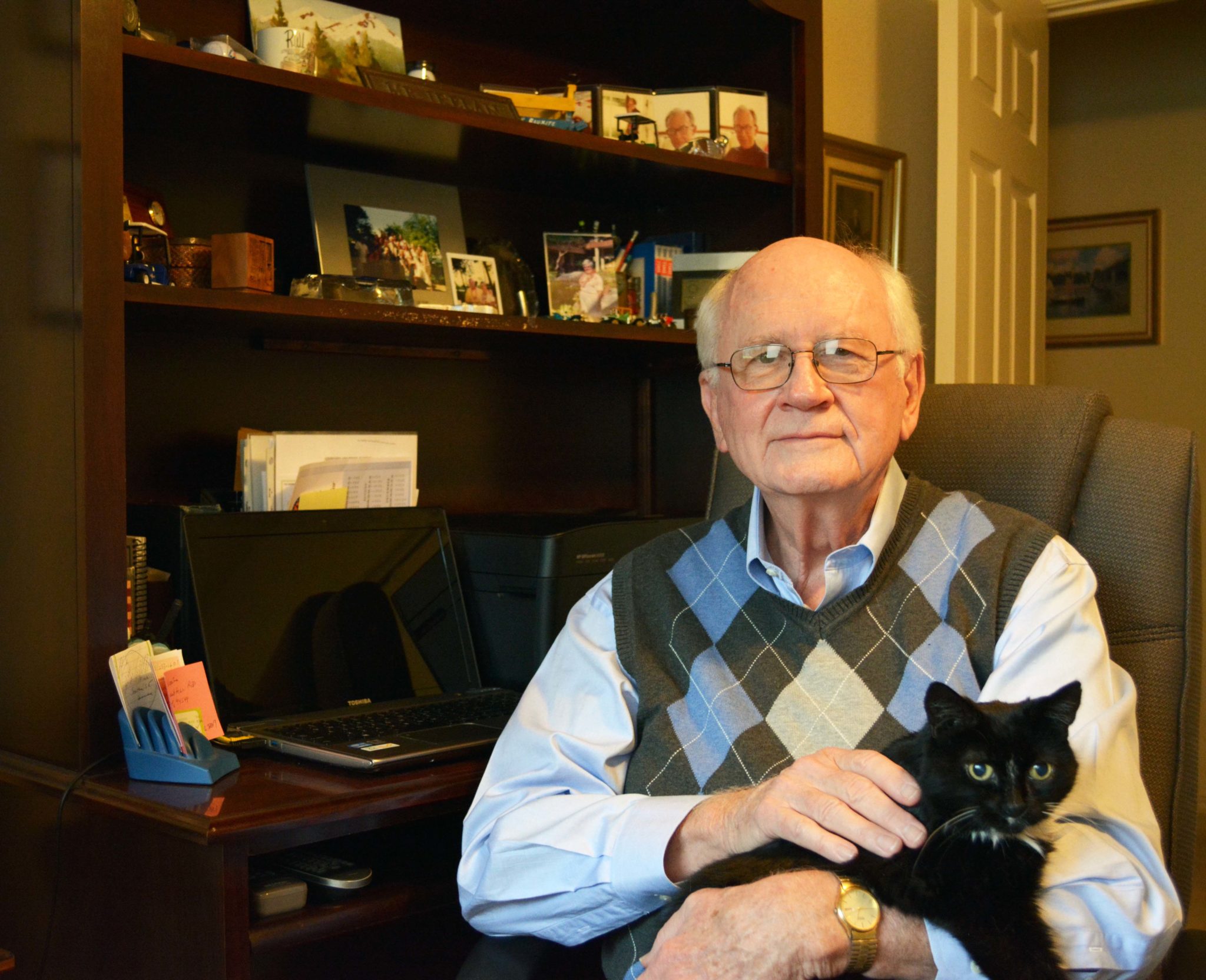
In this interview with Outer Banks Publishing Group author Bob Irelan, he reveals what inspired him to write the novel, Angel’s Truth and hopes to help people realize that justice is not always applied fairly, especially when it to comes to racial minorities.
 Bob, this is your first novel. What inspired you to write it?
Bob, this is your first novel. What inspired you to write it?
Writing was a large part of what I did during my career — first in journalism and then in public relations/communications. But, until this book, I had always dealt with facts. Reading fiction was my release and I have always appreciated a story well told. In retirement, I found the time to attempt writing this novel. It’s liberating to shape a story, make it believable, but not be bound by actual happenings. With respect to the plot, I’ve most always rooted for the underdog. For me, the character Angel Gonzales fills that role in his fight for true and lasting justice.
Were the characters inspired by real life people?
Public Defender Marty Booker was shaped at least in part by a public defender I was exposed to years ago as a member of a jury. I was impressed by how hard he worked on behalf of his client, a minority. Angel and the others were creations of my imagination.
You started your career as a journalist and then moved into corporate public relations and communications. How did you research the information for the story? Did you have any experience in the justice system?
I have to admit I didn’t do a lot of research. I lived in Sugar Land, TX, near Richmond, where the story takes place. Those locations and nearby Rosenberg are real but my description of them — most of the buildings, the park, etc. — is made up. I decided to create a setting that would work with the story I wanted to tell. My knowledge of the justice system is limited, but it’s drawn from jury service, a lifetime of reading and viewing courtroom dramas, and having a father who was a lawyer and a U.S. Attorney.
How long did it take you to research and complete Angel’s Truth?
The better part of a year, although I sometimes took breaks of a week or two. I admire writers who discipline themselves to a daily schedule. I’m sure that’s a more efficient approach than the one I followed.
I wanted to make the point that the truth often is not obvious; that finding it takes persistence, commitment and, if you’re lucky, some help from unanticipated sources. I also wanted to remind the reader about how, too often, justice is unevenly applied — especially as it relates to racial minorities. We’re not yet where we need to be as a fully inclusive society. Despite this, I wanted to write a story where hard-fought truth prevails.
Will there be a sequel? Will you write another book?
I’m not sure, but probably. I found the challenge of creating a plot and developing the characters to give it life very stimulating. Also, in writing this first novel, I overcame some personal doubts and uncertainties. For instance, I had not really written dialog before so that took some learning. The reader will judge whether I succeeded.
Do you prefer fiction or nonfiction and why?
I don’t have a preference. l love biographies and works of history. But I also love fiction, especially mysteries and those that include some courtroom drama. I admire greatly those who write well, those who can draw a picture for the reader. I love a book that grabs my attention and leaves me wondering how the heck the author came up with this or that idea.
Who are your favorite authors and did any inspire you to write Angel’s Truth?
I like John Grisham, Mark Sullivan, David Baldocci, Dan Brown, to name a few. I also like historical novels by authors like Ken Follett, Erik Larson, and Anthony Doerr. In my mind, they are all amazing story tellers. And, yes, I drew inspiration from all of them as well as others.
As a first-time novelist, do you have any advice for potential authors starting their first book?
Yes. Just start writing. Don’t wait until you have everything figured out before you start. Don’t be deterred by not knowing at the outset how your story is going to end. Keep writing and see where your imagination takes you. Learn from the words and phrasing of writers you admire. Bounce ideas and text off people whose judgment you respect — those who will tell you if something is good or not. Take breaks when you need to but commit yourself to a finished product. You’ll be glad you did.
Is there anything you would like to add?
Take your time. Don’t rush the process. This was advice I got from an experienced, successful pro, and it proved to be very helpful. Don’t be shy about asking for help. There are a lot of smart people out there willing to hold your hand on this exciting journey.
___________________________________
Angel Gonzales is charged with heinous crimes that law enforcement, the media, and most folks in Richmond, Texas, and surrounding communities are certain he committed.
The crimes and trial dwarf anything that has happened in that part of the Lone Star state in anyone’s memory.
When, against all odds, the jury renders “not guilty” verdicts, shock escalates to anger.
In the minds of many, justice has failed, and a brutal criminal is being set free. For Angel and his court-appointed public defender, Marty Booker, being judged “not guilty” isn’t enough.
Together and with help from an unanticipated source, they attempt to prove Angel’s innocence.
In the process, they butt up against prejudice, deceit, and a sheriff and district attorney who put politics, ambition, expedience, and arrogance above responsibility to do their jobs.
It’s a story of horror, hatred, belief, and persistence – a story of a Mexican-American teenager who nearly loses his life on the way to becoming a man.
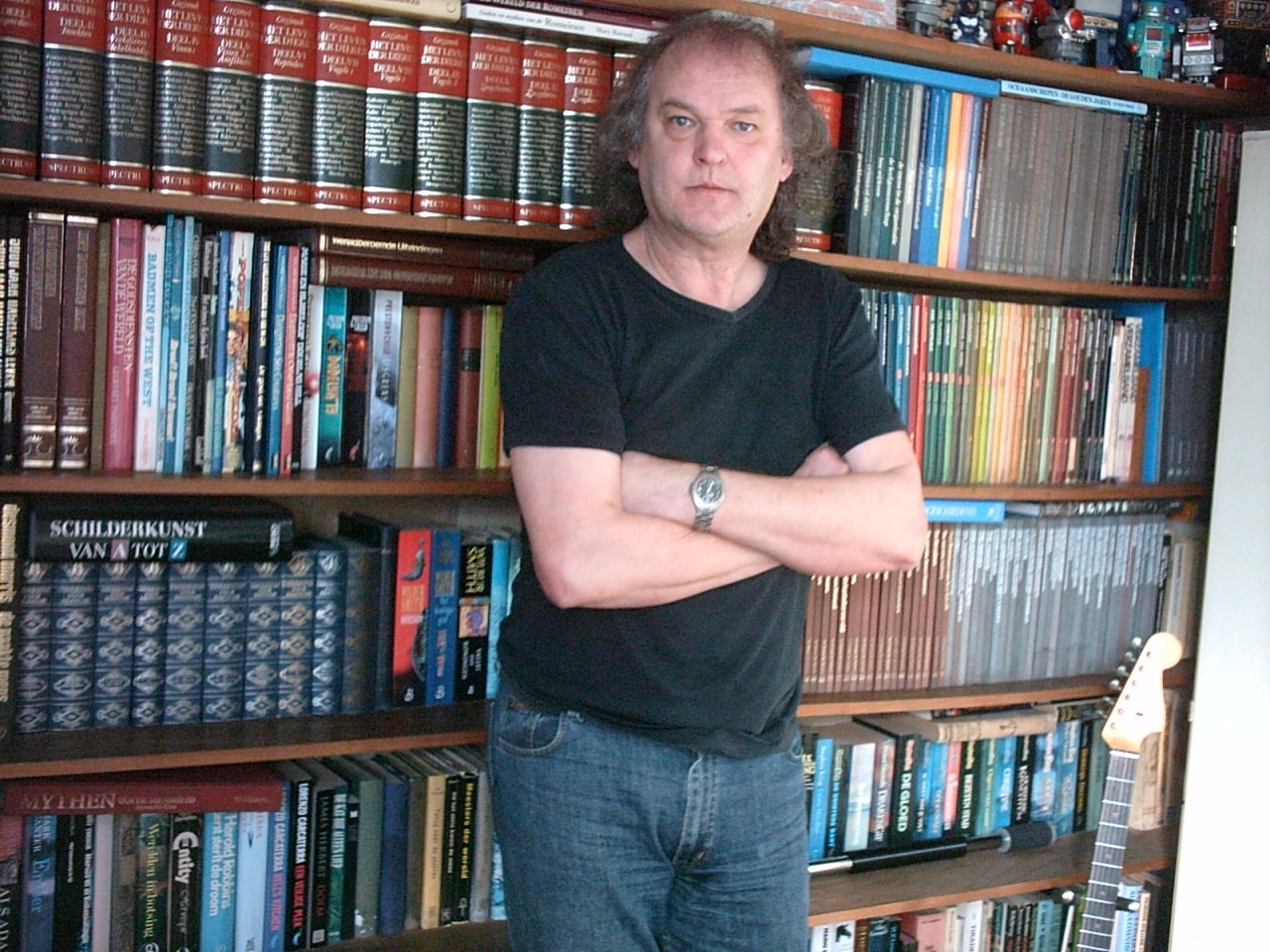
Reprinted from Smart Marketing for Authors
Interview with Netherlands author Koos Verkaik, who has written and published over 60 titles. He is currently an Outer Banks Publishing Group author with his four-book children’s series, Saladin the Wonder Horse.
You are a Dutchman. Many of your books are in English. How does that work?
I have written over sixty different titles, both novels and children’s books. I think and write in Dutch, then translate my work. Anthony Policastro from Outer Banks Publishing Group, publishes my series of children’s books, Saladin the Wonder Horse. He can work with my English texts and takes good care of the necessary editing.
Does writing energize or exhaust you?
For me writing is work and work can make you tired. I am used to write till late at night.
Did you ev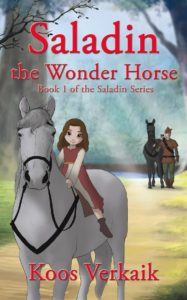 er consider writing under a pseudonym?
er consider writing under a pseudonym?
I wrote lots and lots of books under pseudonym, mainly to make money. That work has nothing to do with the 60 titles I wrote under my own name, Koos Verkaik. I wrote four novels each month for a publisher/distributor – adventures using different nicknames. My full name is Jacobus Jan Verkaik. One of my pseudonyms is Jan Jacobs. Wrote a series of children’s books under that name: Slimmetje (somewhat like Smarty). It sold over 450.000 copies in The Netherlands only!
Do you try more to be original or to deliver to readers what they want?
I had only one job in my life, working as a copywriter for a huge agency in Rotterdam. There I learned to write what people want. And my commercial books also gave what people wanted to read. My own novels come straight from the heart and I don’t wrote them for a certain audience. So, in short, I know how to attract attention and I know how to get to the point in a pleasant way.
Do you want each book to stand on its own, or are you trying to build a body of work with connections between each book?
Each novel stands on its own. I have a contract now in the USA with a publisher and a film company for 14 different titles. All stories on itself. In May this year, Righter’s Mill Press, Princeton comes with my novel HIM, After the UFO Crash and in the summer they will publish Dance of the Jester. Both books are also considered for film. And then they will publish 2 to 4 new books each year.
For children I love to write series. Alex and the Wolpertinger will be published in May this year – the first two books from a series of 30.
Outer Banks Publishing Group has published number one of the series Saladin the Wonder Horse, book two is ready for print.
How did publishing your first book change your process of writing?
I was only 18 when my first novel was published. And 16 when I write scripts for comics. It did not change my process of writing. I wrote fast, I still write fast. That first novel was written during a long weekend. 5000 copies sold.
What was an early experience where you learned that language had power?
I started writing stories at the age of seven. I was amazed by the fact that I could make all characters act the way I wanted them to do. That gave me a miraculous feeling of power.
How many unpublished and half-finished books do you have?
None. All books I ever wrote have been published.
What’s the best way to market your books?
Use all possibilities that the Internet gives you. Never be lazy, take your time to look for new ways, new chances. The world is changing. The Internet makes it possible for me to work with an agent in New Zealand and publishers in the USA. This is an amazing time. Facebook is important, when you are writing. And of course you need your own website.
What kind of research do you do, and how long do you spend researching before beginning a book?
I have a personal library containing about 3,000 books. I read lots and lots non-fiction about science, about the paranormal, about everything. And I am always able to find things back; I know exactly in which book I can find what I am looking for. And the Internet is very helpful when you want to do good research.
How long were you a part-time writer before you became a full-time one?
As I told, I have been a copywriter once. I was only 20 then. When I quit, I became an adventurous writer, finding my way in the labyrinth of the publishing world. Writing commercial stuff under pseudonyms, novels and children’s books under my own name. I wrote hundreds of scripts for comic artists, articles for magazines, recorded albums, etc.
How many hours a day do you write?
I am used to get up at half past six and start working at half past eight to about seven o’clock in the evening. And often I work till late and I also work on the weekends. I write children’s books and novels. More than often I write two books at the same time. All I need is one single idea – that is enough to start writing, I never know how it will end. There is a chaos in my head and I need to put an avalanche of words on the screen or I have to start all over again and concentrate on writing new things. As a boy, I was, of course, not allowed to write to late at night. The bookkeeper of my father’s business knew I had that drive to write after midnight. He gave me a special old light bulb that was used during the Second World War; lights were forbidden then, they could attract bombers. I used the bulb to write at night: a small beam shone down on my paper. Only was able to see it. It was exciting to write my stories in the dark. The old bookkeeper encouraged me to write my stories when I was still a kid.
Can you tell more about the new series Saladin the Wonder Horse?
Book 1: Saladin the Wonder Horse
Angie looks after the horses of Lord Baltimore.
It is a rough time in England, where Prince John sits temporarily on the throne of his brother Richard the Lionhearted.
The girl plunges into wild adventures when she tries to keep a colt out of the greedy hands of the prince. She meets a mysterious knight, who gives her his horse – Saladin, the black wonder horse.
With the two faithful animals, Angie manages to reach the camp of Robin Hood, bringing him an important message.
Silver, the colt she saved, learns quickly from the clever Saladin.
The exciting adventures of Angie, Silver, and Saladin come to a head as the girl resolves to outsmart Prince John.
And of course she cannot achieve that without her special horses … and some very special friends.
Book 2: Saladin and Silver
Angie roams the country that is reigned by the ambitious Prince John.
An encounter with a mysterious knight saddles her with a mysterious horse: Saladin the wonder stallion. This horse reveals himself as the teacher of Silver, her own, silver colored horse. This way Silver becomes a wonder horse as well.
Angie has gone far away from Nottingham and the castle of the prince.
Of course she rides Silver. The beautiful horse is no longer a colt, hardly seems to feel the weight of the young girl and loves to be together with her.
Again Angie meets the most odd people – a tinker, Joe and his bear Bruto and especially the spoiled Princess Wanda, daughter of Prince John, who is after her favorite horse! Angie has become an outlaw and a fugitive: she has to keep Silver out of the hands of the greedy princess!
Book 3: Silver and the Ghost Horse
Again Angie and her wonder horse Silver plunge into the most dangerous adventures. It all starts, when a sly councilor and a giant soldier decide to destroy the camp of Robin Hood. No one knows where to find that camp of Robin and his men. No one, except for Angie! Soon everyone is looking for her and things don’t look good for the girl. But she can count on the help of Silver and Saladin and of her friend Joe and his bear Bruto. And another party is interested in Angie and Silver! A strange man, who calls himself Sultan! And where do these mysterious ghost horses come from? Angie and her horse stay tough. For together they are strong, together they stand tall in a land full of enemies and problems.
Book 4: The Jester of Nottingham
Prince John reigns over England, now his brother Richard Lionheart is not there. He exploits the people and wears Richard’s crown. Everyone fears this mean prince. Except for men like Robin Hood and girls like Angie!
Angie roams the country on the back of her wonder horse Silver and comes across the most odd persons. She runs into knight Rush and his little son Arthur; she meets a merry rat catcher and returns to the camp of Robin Hood. In the meantime, Prince John organizes an election: the man who becomes the Jester of Nottingham is allowed to reign the country for one week. He does not know that King Richard has set foot on English ground again! Angie knows where she can find the king and finds him with Silver and the mighty Saladin.
And the king can use the help of Angie and her wonder horses!
The novels All-Father and Wolf Tears gave him the name of the Dutch Stephen King. Koos was invited by Bill Thompson, the editor of the first Stephen King and John Grisham books. In New York’s Empire State Building. they polished one of his best and most intellectual books: Dance of the Jester that will be published this summer by Righter’s Mill Press, Princeton, New Jersey, USA.
Learn more about Koos on his website > https://koosverkaik.com
Buy a copy of his book
https://www.amazon.com/Saladin-Wonder-Horse-Book
Koos Verkaik Music: https://soundcloud.com/user-224641692
Koos Verkaik Books: https://readwatchandthink.wordpress.com/tag/koos-verkaik/
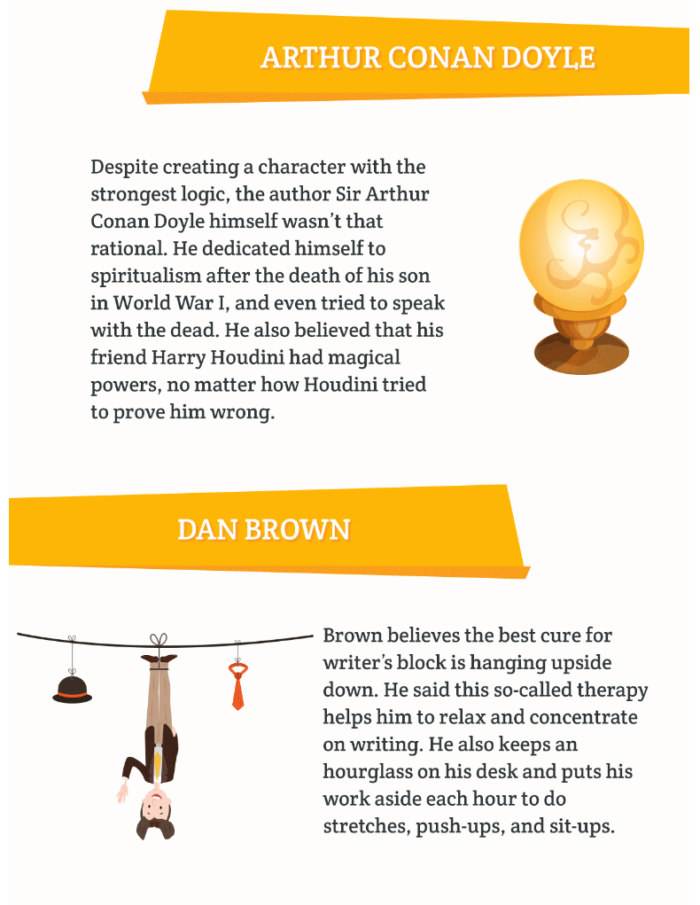
By Jack Milgram of Custom Writing

From The Six Main Arcs in Storytelling, as Identified by an A.I. by Adrienne LaFrance, published in The Atlantic
Based on author Kurt Vonnegut’s 35-year-old master’s thesis that every story has a narrative shape, a group of researchers from the University of Vermont and the University of Adelaide collected computer-generated story arcs for nearly 2,000 works of English language fiction and classified each into one of six core types of narratives based on what happens to the protagonist.
The researchers’ focus was on the emotional trajectory of a story, not merely its plot. They also analyzed which emotional structure writers used most, and how that contrasted with the ones readers liked best.
They used a collection of fiction from the digital library Project Gutenberg, they selected 1,737 English-language works of fiction between 10,000 and 200,000 words long.
Then, they ran their dataset through a sentiment analysis to generate an emotional arc for each work.
The most-prevalent six narratives the data revealed are:
1. Rags to Riches (rise)
2. Riches to Rags (fall)
3. Man in a Hole (fall then rise)
4. Icarus (rise then fall)
5. Cinderella (rise then fall then rise)
6. Oedipus (fall then rise then fall)
So if you have the proverbial writer’s block consider one of the six narratives to free your story.
Read the rest of the story from The Atlantic>
Kurt Vonnegut explains his thesis of the shape of the narrative.

If you vote for Trump and his MAGA GOP members you may indirectly start World War III.
If Trump and his MAGA GOP take control of our Congress, they will cut off support for Ukraine. They already cut support on the advice of Trump when the Congress was ready to approve the spending bill with support for Ukraine.
What will happen next?
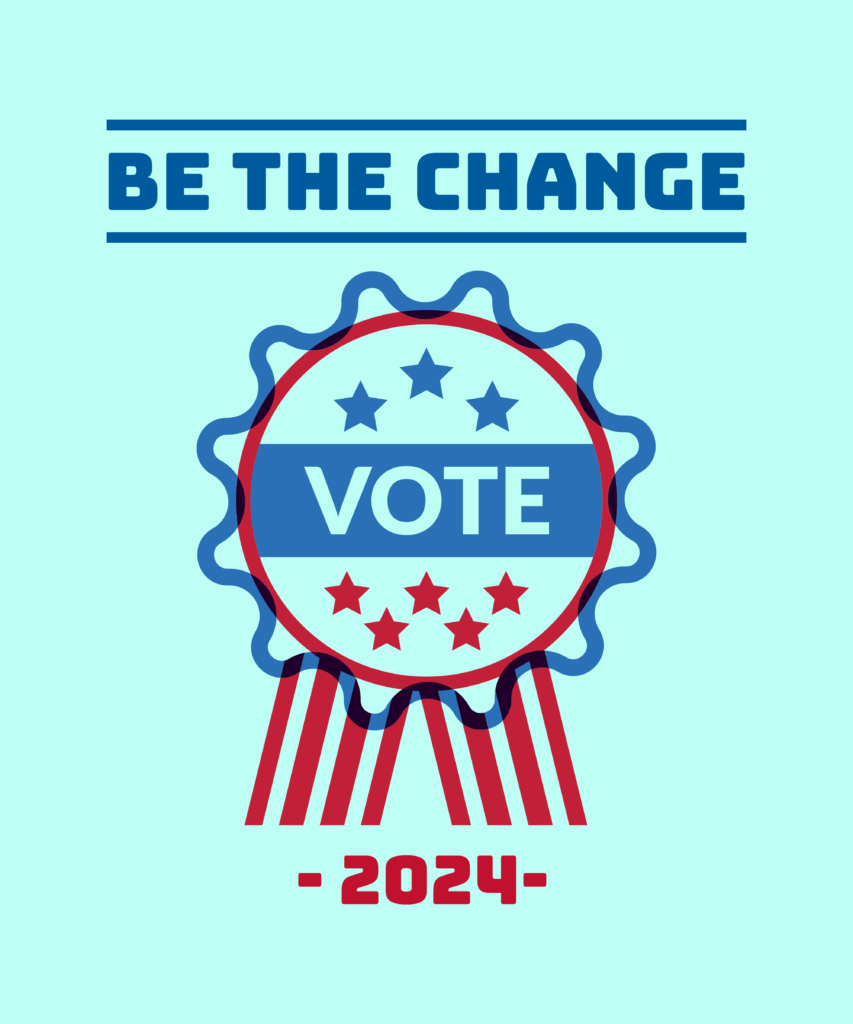
said Larry Jacobs, director of the Center for the Study of Politics and Governance at the University of Minnesota. “This is supposed to be the party of conservative principles, of tradition, of respect for customs and rules that make society governable.
“The idea that the law does not apply to Republicans is something that has now become part of the mainstream of the Republican party. We see it in terms of the approach to elections. We see it in terms of the treatment of immigrants. Some of the actions with regard to abortion may approach that level. The Republican party appears to consider the law and the constitution to be optional and to have lost legitimacy.”
From The Guardian
Republicans’ lawless leaders at odds with midterm law and order message | Republicans | The Guardian
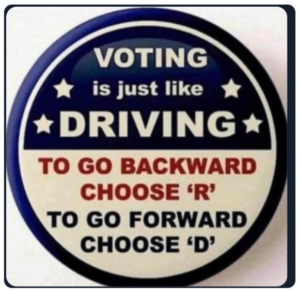
If you vote Republican you are supporting:
– 19 GOP red states have pending laws suppressing voter’s ability to vote. Historically, dictators and Fascists have suppressed votes to stay in power.
– The GOP has come out in support of QAnon, The Oath Keepers and the Proud Boys
– You may lose a loved one, a relative or a friend in a train crash, a bridge collapse or a plane crash as Republicans strip funds from President Biden’s infrastructure bill.
– The Texas abortion ban if left to stand will be passed in several other GOP states. Idaho will pass an anti-abortion law based on the Texas law. 16 states have “trigger” abortion ban laws.
by the US Supreme Court.
https://cnn.it/3RaW1zm
https://nyti.ms/3IcANNo
With the recent Supreme Court banning EPA authority from polluters
https://bit.ly/3IfQ1Bf
on Gun Purchases – will never get passed.
Watch Jimmy Kimmel’s emotional plea to improve gun purchase background checks
https://cnn.it/3AnRweO
– will never go up leaving 18 states still paying $7.25 an hour.
– the last thing America needs are conservative leaders, especially some Republicans who want to keep America from progressing. The last thing America needs is backward-thinking leaders in the 21st Century.
– Republicans have turned to cheating to stay in power or to get back into power…and nothing is getting done by them for the American people.
The enforcement or advocacy of strict obedience to authority at the expense of personal freedom.
and everything America stands for: Truth, Justice and Liberty for all? Look what is happening in Ukraine.
*Of course, not all Republicans are like those described above. Here is a list of those who should stay in office.
House of Representatives – those who voted to impeach the former president
Senate – The Republicans who voted to convict the former president after impeachment:
YOUR VOTE COUNTS. It’s a lie to think otherwise.
Paid for by Jake Stone for American Democracy
VOTE like your freedom depended on it…because it does.
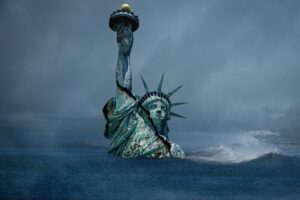
If you have a completed manuscript, we would like to hear from you. We are currently looking for titles to publish.
Go to our Query Page (see the tab on the top) and review our submission requirements before submitting your manuscript. We like to receive the first three chapters by email.
Email to
query@outerbankspublishing.com
Copyright @ 2022 - Outer Banks Publishing Group - Designed by Webriti
